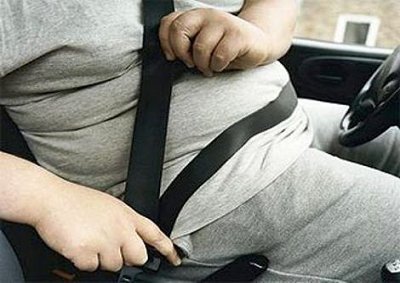Fat? Studies Say Crash Will Kill You

Researchers gave the warning in a report in a specialist journal.
Transport safety scientists Thomas Rice of the University of California and Motao Zhu of the University of West Virginia delved into a US data bank on road accidents to produce the Fatality Analysis Reporting System. They dug out data from 1996-2008 about more than 57 000 two-car collisions. This was whittled down to cases in which both parties had been driving vehicles of similar size and type.
The team then compared the risk of fatality against the victim's estimated body mass index (BMI), a benchmark of fat, which is calculated by taking one's weight in kg and dividing it by one's height in metres squared.
An adult with a BMI of 18.5 to 24.9 is normal, below that is underweight while 25 to 29.9 is overweight. Above 30 is just plain obese.
At risk
For those with BMI of 30-34.9, the increased risk was 21%; 35-39.9 was 51%; 40 or above was 80%.
Obese women were at even greater risk. Among those in the 35-39.9 BMI category, the risk of death was double that of people of normal weight.
Further work was needed to explain the big differences, the researchers said, but obese people suffered injuries different to those of normal-weight individuals in car accidents.
Data from intensive-care units say that obese patients tend to have more chest injuries and fewer head injuries, were likelier to have more complications, required longer hospital stays - and were more likely to die of their injuries.
Another question is whether obese people properly use their seat belt, rather than leave it unbuckled or partially fastened because it is uncomfortable - and whether safety designs in cars are flawed.
Crash-test behavior
Crash tests conducted with cadavers found that in a frontal collision people of normal weight lurched forward slightly before the seat belt engaged the pelvis to prevent further movement, says the study. Obese cadavers moved substantially forward from the seat, especially in the lower body. This was because abdominal fat acted as a spongy padding, slowing the time it took for the belt to tighten across the lap.
The final data set used in the study entailed 3403 pairs of drivers for whom data on weight, age, seat belt use and airbag deployment were available.
Almost half of these drivers were of normal weight; one in three was overweight; and almost one in five (18%) was obese.
Related News


